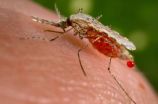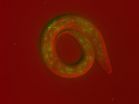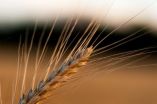(Press-News.org) MINNEAPOLIS / ST. PAUL (July 18, 2014) Feeding a growing human population without increasing stresses on Earth's strained land and water resources may seem like an impossible challenge. But according to a new report by researchers at the University of Minnesota's Institute on the Environment, focusing efforts to improve food systems on a few specific regions, crops and actions could make it possible to both meet the basic needs of 3 billion more people and decrease agriculture's environmental footprint.
The report, published today in Science, focuses on 17 key crops that produce 86 percent of the world's crop calories and account for most irrigation and fertilizer consumption on a global scale. It proposes a set of key actions in three broad areas that that have the greatest potential for reducing the adverse environmental impacts of agriculture and boosting our ability meet global food needs. For each, it identifies specific "leverage points" where nongovernmental organizations, foundations, governments, businesses and citizens can target food-security efforts for the greatest impact. The biggest opportunities cluster in six countries — China, India, U.S., Brazil, Indonesia and Pakistan — along with Europe.
"This paper represents an important next step beyond previous studies that have broadly outlined strategies for sustainably feeding people," said lead author Paul West, co-director of the Institute on the Environment's Global Landscapes Initiative. "By pointing out specifically what we can do and where, it gives funders and policy makers the information they need to target their activities for the greatest good."
The major areas of opportunity and key leverage points for improving the efficiency and sustainability of global food production are:
1. Produce more food on existing land. Previous research has detected the presence of a dramatic agricultural "yield gap" — difference between potential and actual crop yield — in many parts of the world. This study found that closing even 50 percent of the gap in regions with the widest gaps could provide enough calories to feed 850 million people. Nearly half of the potential gains are in Africa, with most of the rest represented by Asia and Eastern Europe.
2. Grow crops more efficiently. The study identified where major opportunities exist to reduce climate impacts and improve the efficiency with which we use nutrients and water to grow crops.
Agriculture is responsible for 20 to 35 percent of global greenhouse gas emissions, largely in the form of carbon dioxide from tropical deforestation, methane from livestock and rice growing, and nitrous oxide from crop fertilization. The study found that the biggest opportunities for reducing greenhouse gas production are in Brazil and Indonesia for deforestation; China and India for rice production; and China, India and the United States for crop fertilization.
With respect to nutrient use, the study found that worldwide, 60 percent of nitrogen and nearly 50 percent of phosphorus applications exceed what crops need to grow. China, India and the U.S. — and three crops, rice, wheat and corn — are the biggest sources of excess nutrient use worldwide, so offer the greatest opportunity for improvement.
With respect to water, rice and wheat are the crops that create the most demand for irrigation worldwide, and India, Pakistan, China and the U.S. account for the bulk of irrigation water use in water-limited areas. Boosting crop water use efficiency, the researchers found, could reduce water demand 8 to 15 percent without compromising food production.
3. Use crops more efficiently. The third major category of opportunities characterized for boosting food production and environmental protection relate to making more crop calories available for human consumption by shifting crops from livestock to humans and reducing food waste.
The crop calories we currently feed to animals are sufficient to meet the calorie needs of 4 billion people. The study noted that the U.S., China and Western Europe account for the bulk of this "diet gap," with corn the main crop being diverted to animal feed. Although cultural preferences and politics limit the ability to change this picture, the authors note that shifting crops from animal feed to human food could serve as a "safety net" when weather or pests create shortages.
In addition, some 30 to 50 percent of food is wasted worldwide. Particularly significant is the impact of animal products: The loss of 1 kilogram of boneless beef has the same effect as wasting 24 kilograms of wheat due to inefficiencies in converting grain to meat. The authors illustrate how food waste in the U.S., China and India affect available calories, noting that reducing waste in these three countries alone could yield food for more than 400 million people.
"Sustainably feeding people today and in the future is one of humanity's grand challenges. Agriculture is the main source of water use, greenhouse gas emissions, and habitat loss, yet we need to grow more food," West said. "Fortunately, the opportunities to have a global impact and move in the right direction are clustered. By focusing on areas, crops and practices with the most to be gained, companies, governments, NGOs and others can ensure that their efforts are being targeted in a way that best accomplishes the common and critically important goal of feeding the world while protecting the environment. Of course, while calories are a key measure of improving food security, nutrition, access and cultural preferences must also be addressed. But the need to boost food security is high. So let's do it."
INFORMATION:
The University of Minnesota's Institute on the Environment seeks lasting solutions to Earth's biggest challenges through research, partnerships and leadership development. For more information, visit environment.umn.edu.
New study shows how existing cropland could feed billions more
Report pinpoints key food systems 'leverage points' that hold the greatest the potential to boost global food security and protect the environment
2014-07-17
ELSE PRESS RELEASES FROM THIS DATE:
New potential way to control spread of insect-borne disease
2014-07-17
A cross-disciplinary team is calling for public discussion about a potential new way to solve longstanding global ecological problems by using an emerging technology called "gene drives." The advance could potentially lead to powerful new ways of combating malaria and other insect-borne diseases, controlling invasive species and promoting sustainable agriculture.
Representing the Wyss Institute for Biologically Inspired Engineering at Harvard University, Harvard Medical School, Harvard School of Public Health, the Massachusetts Institute of Technology (MIT), Boston University, ...
In development, it's all about the timing
2014-07-17
Cold Spring Harbor, NY – Closely related organisms share most of their genes, but these similarities belie major differences in behavior, intelligence, and physical appearance. For example, we share nearly 99% of our genes with chimps, our closest relatives on the great "tree of life." Still, the differences between the two species are unmistakable. If not just genes, what else accounts for the disparities? Scientists are beginning to appreciate that the timing of the events that happen during development plays a decisive role in defining an organism, which may help to ...
Viral relics show cancer's 'footprint' on our evolution
2014-07-17
Viral relics show cancer’s ‘footprint’ on our evolution Cancer has left its ‘footprint’ on our evolution, according to a study which examined how the relics of ancient viruses are preserved in the genomes of 38 mammal species.
Viral relics are evidence of the ancient battles our genes have fought against infection. Occasionally the retroviruses that infect an animal get incorporated into that animal’s genome and sometimes these relics get passed down from generation to generation – termed ‘endogenous retroviruses’ (ERVs). Because ERVs may be copied to other parts of the ...
When is a molecule a molecule?
2014-07-17
Using ultra-short X-ray flashes, an international team of researchers watched electrons jumping between the fragments of exploding molecules. The study reveals up to what distance a charge transfer between the two molecular fragments can occur, marking the limit of the molecular regime. The technique used can show the dynamics of charge transfer in a wide range of molecular systems, as the scientists around Dr. Benjamin Erk and Dr. Daniel Rolles of DESY and Professor Artem Rudenko of Kansas State University report in the scientific journal Science. Such mechanisms play ...
Pitt-led study suggests cystic fibrosis is 2 diseases, 1 doesn't affect lungs
2014-07-17
PITTSBURGH, July 17, 2014 – Cystic fibrosis (CF) could be considered two diseases, one that affects multiple organs including the lungs, and one that doesn't affect the lungs at all, according to a multicenter team led by researchers at the University of Pittsburgh School of Medicine. The research, published online today in PLOS Genetics, showed that nine variants in the gene associated with cystic fibrosis can lead to pancreatitis, sinusitis and male infertility, but leave the lungs unharmed.
People with CF inherit from each parent a severely mutated copy of a gene ...
Scientists find protein-building enzymes have metamorphosed & evolved new functions
2014-07-17
LA JOLLA, CA AND JUPITER, FL—Scientists at The Scripps Research Institute (TSRI) and Hong Kong University of Science and Technology (HKUST) and their collaborators have found that ancient enzymes, known for their fundamental role in translating genetic information into proteins, evolved myriad other functions in humans. The surprising discovery highlights an intriguing oddity of protein evolution as well as a potentially valuable new class of therapeutic proteins and therapeutic targets.
"These new protein variants represent a previously unrecognized layer of biology—the ...
A new stable and cost-cutting type of perovskite solar cell
2014-07-17
Perovskite solar cells show tremendous promise in propelling solar power into the marketplace. The cells use a hole-transportation layer, which promotes the efficient movement of electrical current after exposure to sunlight. However, manufacturing the hole-transportation organic materials is very costly and lack long term stability. Publishing in Science, a team of scientists in China, led by Professor Hongwei Han in cooperation with Professor Michael Grätzel at EPFL, have developed a perovskite solar cell that does not use a hole-transporting layer, with 12.8% conversion ...
Scientists complete chromosome-based draft of the wheat genome
2014-07-17
MANHATTAN, Kansas — Several Kansas State University researchers were essential in helping scientists assemble a draft of a genetic blueprint of bread wheat, also known as common wheat. The food plant is grown on more than 531 million acres around the world and produces nearly 700 million tons of food each year.
The International Wheat Genome Sequencing Consortium, which also includes faculty at Kansas State University, recently published a chromosome-based draft sequence of wheat's genetic code, which is called a genome. "A chromosome-based draft sequence of the hexaploid ...
Ultrafast X-ray laser sheds new light on fundamental ultrafast dynamics
2014-07-17
MANHATTAN, Kansas — Ultrafast X-ray laser research led by Kansas State University has provided scientists with a snapshot of a fundamental molecular phenomenon. The finding sheds new light on microscopic electron motion in molecules.
Artem Rudenko, assistant professor of physics and a member of the university's James R. Macdonald Laboratory; Daniel Rolles, currently a junior research group leader at Deutsches Elektronen-Synchrotron in Hamburg, Germany, who will be joining the university's physics department in January 2015; and an international group of collaborators ...
No evidence that California cellphone ban decreased accidents, says Colarado University Boulder researcher
2014-07-17
In a recent study, a researcher at the University of Colorado Boulder found no evidence that a California ban on using hand-held cellphones while driving decreased the number of traffic accidents in the state in the first six months following the ban.
The findings, published in the journal Transportation Research Part A: Policy and Practice, are surprising given prior research that suggests driving while using a cellphone is risky. For example, past laboratory studies have shown that people who talk on a cellphone while using driving simulators are as impaired as people ...
LAST 30 PRESS RELEASES:
American Meteorological Society announces Rick Spinrad as 2026 President-Elect
Biomass-based carbon capture spotlighted in newly released global climate webinar recording
Illuminating invisible nano pollutants: advanced bioimaging tracks the full journey of emerging nanoscale contaminants in living systems
How does age affect recovery from spinal cord injury?
Novel AI tool offers prognosis for patients with head and neck cancer
Fathers’ microplastic exposure tied to their children’s metabolic problems
Research validates laboratory model for studying high-grade serous ovarian cancer
SIR 2026 delivers transformative breakthroughs in minimally invasive medicine to improve patient care
Stem Cell Reports most downloaded papers of 2025 highlight the breadth and impact of stem cell research
Oxford-led study estimates NHS spends around 3% of its primary and secondary care budget on the health impacts of heat and cold in England
A researcher’s long quest leads to a smart composite breakthrough
Urban wild bees act as “microbial sensors” of city health.
New study finds where you live affects recovery after a hip fracture
Forecasting the impact of fully automated vehicle adoption on US road traffic injuries
Alcohol-related hospitalizations from 2016 to 2022
Semaglutide and hospitalizations in patients with obesity and established cardiovascular disease
Researchers ‘listen in’ to embryo-mother interactions during implantation using a culture system replicating the womb lining
How changing your diet could help save the world
How to make AI truly scalable and reliable for real-time traffic assignment?
Beyond fragmented markets: A new framework for efficient and stable ride-pooling
Can shape priors make road perception more reliable for autonomous driving?
AI tracks nearly 100 years of aging research, revealing key trends and gaps
Innovative techniques enable Italy’s first imaging of individual trapped atoms
KIER successfully develops Korea-made “calibration thermoelectric module” for measuring thermoelectric device performance
Diversifying US Midwest farming for stability and resilience
Emphasizing immigrants’ deservingness shifts attitudes
Japanese eels, climate change, and river temperature
Pusan National University researchers discover faster, smarter heat treatment for lightweight magnesium metals
China’s 2024 Gastroenterology Report: marked progress in endoscopy quality and disease management
Pusan National University researchers uncover scalable method for ultrahigh-resolution quantum dot displays
[Press-News.org] New study shows how existing cropland could feed billions moreReport pinpoints key food systems 'leverage points' that hold the greatest the potential to boost global food security and protect the environment



